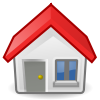BBCode: Difference between revisions
m Reverted 1 edit by 81.97.172.48 using STiki |
No edit summary |
||
| Line 134: | Line 134: | ||
[[Web 2.0]] progression of BBCode sees the uncommon occurrence of new tags such as <nowiki>[youtube], [facebook], and [skype] tags.</nowiki> |
[[Web 2.0]] progression of BBCode sees the uncommon occurrence of new tags such as <nowiki>[youtube], [facebook], and [skype] tags.</nowiki> |
||
== Implementation == |
|||
BBCode is typically implemented by applying a series of [[regular expression]] string-replace operations upon the input. Because regular expressions are limited in analyzing the structure of text input, this has the artifact that any non-hierarchical BBCode input will be transformed into invalid non-hierarchical HTML without error. |
|||
Applying traditional parsing techniques is made difficult by ambiguities in the markup, such as in <code>[quote=[b]text[/b][/quote]</code>, where the input can either be interpeted as "text" quoted from someone called "[b", or the bolded text "text" surrounded by "[quote=" and "[/quote]". |
|||
==References== |
==References== |
||
Revision as of 11:18, 22 June 2014
This article needs additional citations for verification. (April 2011) |
| Operating system | Cross-platform |
|---|---|
| Type | message board |
| Website | php |
BBCode or Bulletin Board Code is a lightweight markup language used to format posts in many message boards. The available tags are usually indicated by square brackets ([ ]) surrounding a keyword, and they are parsed by the message board system before being translated into a markup language that web browsers understand—usually HTML or XHTML.
BBCode was first introduced in 1998 by the messageboard software Ultimate Bulletin Board (UBB).
Tags
| BBCode | Example HTML | Rendering | |
[b]bolded text[/b]
|
<b>bolded text</b>, <strong>bolded text</strong> or <span style="font-weight: bold;">bolded text</span>
|
bolded text | |
[i]italicized text[/i]
|
<i>italicized text</i>, <em>italicized text</em> or <span style="font-style: italic;">italicized text</span>
|
italicized text | |
[u]underlined text[/u]
|
<u>underlined text</u>, <ins>underlined text</ins> or <span style="text-decoration: underline;">underlined text</span>
|
underlined text | |
[s]strikethrough text[/s]
|
<s>strikethrough text</s>, <del>strikethrough text</del> or <span style="text-decoration: line-through;">strikethrough text</span>
|
||
[url]http://example.org[/url]
|
<a href="http://example.org">http://example.org</a>
|
http://example.org | |
[url=http://example.com]Example[/url]
|
<a href="http://example.com">Example</a>
|
Example | |
[img]http://upload.wikimedia.org/wikipedia/commons/thumb/7/7c/Go-home.svg/100px-Go-home.svg.png[/img]
|
<img src="http://upload.wikimedia.org/wikipedia/commons/thumb/7/7c/Go-home.svg/100px-Go-home.svg.png" alt="" />
|

| |
[quote="author"]quoted text[/quote](including optional author)
|
<blockquote><p>quoted text</p></blockquote>(usually implemented in more advanced ways) |
To quote:
| |
[code]monospaced text[/code]
|
<pre>monospaced text</pre>
|
monospaced text
| |
[style size="15px"]Large Text[/style](The unit of measurement varies with each BBCode variant and could represent pixels, points, or relative HTML sizes.) |
<span style="font-size:15px">Large Text</span> or <font size="(+,-)x">Different text-size</font> (you can set + or - and x is a number representing pixels
|
Large Text | |
[style color="red"]Red Text[/style]or
|
<font color="#FF0000">Red Text</font>, <font color="red">Red Text</font>, <span style="color:#FF0000;">Red Text</span>, <span style="color:red;">Red Text</span>
|
Red Text | |
:)
(And other emoticons, depending on the variant. Most BBCodes do not enclose emoticons in square brackets, leading to frequent accidental usage) |
<img src="Face-smile.svg" alt=":-)">
|
(Specific image and size vary) | |
[list]
[*]Entry 1
[*]Entry 2
[/list]
Some message boards do not need the square brackets around the markers, e.g.:
(many variants for li and /li, list types (unordered and ordered, with different bullets or counter formats), etc.) |
<ul><li>Entry 1</li><li>Entry 2</li></ul>
|
| |
[table]
[tr]
[td]table data[/td]
[/tr]
[/table]
|
<table><tr><td>table data</td></tr></table>
|
|
Use in forums
Some forums may allow the tag [background]. It is used similarly to the [img] tag and should be used with an image filename to display as the post background.
Many message boards include a FAQ with information on how to use their own variants of BBCode. In addition, some bulletin board systems allow administrators to define their own custom BBCodes. This is usually done by asking them to specify the BBCode markup (utilizing variables/wildcards to indicate the user-customizable parts of the code) and then indicating the XHTML replacement which will be substituted for the BBCode.
Web 2.0 progression of BBCode sees the uncommon occurrence of new tags such as [youtube], [facebook], and [skype] tags.
Implementation
BBCode is typically implemented by applying a series of regular expression string-replace operations upon the input. Because regular expressions are limited in analyzing the structure of text input, this has the artifact that any non-hierarchical BBCode input will be transformed into invalid non-hierarchical HTML without error.
Applying traditional parsing techniques is made difficult by ambiguities in the markup, such as in [quote=[b]text[/b][/quote], where the input can either be interpeted as "text" quoted from someone called "[b", or the bolded text "text" surrounded by "[quote=" and "[/quote]".
References
- ^ BOINC Project Forums et al.
